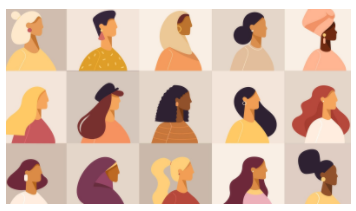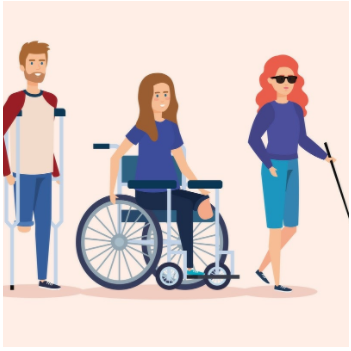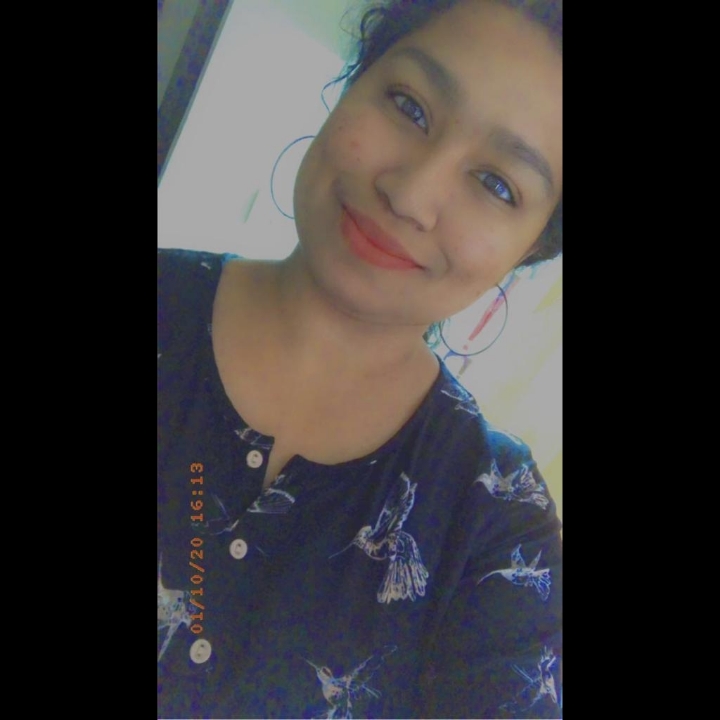Marginalized communities and Mental health talk 101
Nikita Ghodke writes:
Marginalized communities are often relegated to the borders of society. They are deprived of the elementary control of their lives, leaving them handicapped. Sociologists say these communities majorly impact the development of human beings and society. The end goal of any society is to empower an atmosphere for individuals to enjoy a productive, healthy, and resourceful life. This hierarchy structured by the society we live in and adhere to has limited basic amenities to these communities. Individuals in our society discriminated against their sex, gender, caste, and individuals with disabilities considered to live in the margins. The dictionary defines mental health as a person’s condition on their psychological and emotional well-being.
Accessibility to mental health practitioners has always been an issue. The bigger question that should be asked to the mental health community is, are there binaries in treatment? Does gender matter when it comes to assisting someone’s mental health needs? Does color matter? Caste? 10th October, world mental health day, sheds light on the special attention and the awareness around each year. The theme for this year, Mental health for all is stated by WHO. This campaign aimed at increasing investment in mental health for everyone, irrespective of their background amidst the pandemic.

Why is there a fuss around womxn’s mental health in India?
A quote by feminismindia.com said, “It is necessary to link individual mental health to family and community. Our social and political system must center the mental health of marginalized communities in ways informed by concepts of social justice and dignity.”
Why does gender matter when we discuss mental health? Gender differs when we observe common mental disorders like depression, anxiety. These disorders, in which womxn predominate, affect approximately 1 in 3 people. Thus, constituting to a serious public health problem, according to WHO. Emotional issues are often associated with women. Gender stereotypes are more apt to reinforce social stigma and constrain help. They are barriers to the accurate identification and treatment of psychological disorders. Thus, leading to an increased issue every year. As per statistics, depressive disorders account for close to 41.9% of neuropsychiatric disorders among women compared to 29.3% among men. About 50 to 70% of violence against women has been reported in the last decade. Additionally, approximately three in five women suffer rape or attempted rape in their lifetime.
In an article, Neerja Birla, Founder, and Chairperson of Mpower, an organization that works towards tackling mental health issues among the youth. She said, “The biggest challenge is a prevalence of various misconceptions in our society and a lack of information and awareness. This makes young people feel like their illness is something to be ashamed of and propagates further stigma and secretiveness, thereby becoming a vicious cycle. So, mental illness often goes undiagnosed and untreated. People should accept that mental well-being is just like physical well-being,”
A research paper in the Indian Journal of Psychological Medicine stated, “In the Indian scenario, a man is always treated as an asset wherein families try to accommodate men even though with the difficulties and the wife or parents will act as a source of support to them. Yet, for women, the situation is entirely different. The widow is abandoned; the divorced one is consistently blamed; the single one is frequently questioned about the illness, and the married womxn are always shuttled between the family of origin and the family of procreation.”
According to a report by wire.com, a womxn anonymous said, “I was talking about my nightmares to my therapist and while in the middle of that I accidentally told him that I am a bisexual and out of nowhere he just slapped me and asked me to go away. The incident did make me badly depressed, took a toll on my health and everything. I already have ADD and OCD, and that’s what I was seeing the therapist. So the depression just doubled from there, and although now I have overcome it slightly, it still keeps on running in my head.”
Today’s youth marches the pride with their head held high. While we see rainbow colors all around us for that particular pride month, do we address the problems they go through? With facts stated, poor mental health can not be normalized for ‘this is how it works.’ Seeking professional help for poor mental health should be normalized.

LGBTQ+ Community and their mental health.
Queer, an affirmative umbrella term used to describe individuals’sexual orientation, gender identity that does not conform to dominant social norms. Queer people are often misunderstood, overlooked, and underrepresented in the health care system and societal institutions. Although the American Psychiatric Association (APA) states that the Diagnostic and Statistical Manual of Mental Disorders (DSM) established that homosexuality was not a mental disorder in 1973, enormous stigma continues to surround those who are not heterosexual or cisgender. According to research, individuals that belong to the LGBQ are more than twice as likely as heterosexual men and womxn to have a mental health disorder in their lifetime. Individuals with same-gender attractions are 2.5 times more likely to experience depression, anxiety, and substance misuse compared with heterosexual individuals.
Additionally, a majority of LGBTQ+ people say that they or an LGBTQ+ friend or family member have been threatened or non-sexually harassed (57 percent), been sexually harassed (51 percent), or experienced violence (51 percent) because of their sexuality or gender identity. The community faces many forms of discrimination, including labeling, stereotyping, denial of opportunities or access, and verbal, mental, and physical abuse. They are one of the most targeted communities by perpetrators of hate crimes in the country.
Such discrimination can contribute to a significantly heightened risk for PTSD among individuals in the community compared to those who identify as heterosexual and cisgender. Though the pride month is celebrated every year across the globe, the sheer understanding of their rights and mental health is disregarded by social and cultural beliefs.
We often think discrimination happens in spaces where there is a lack of awareness of gender and sexuality. Although after interviewing a few individuals from the community, we see social media, peer groups as one of the leading reasons for poor mental health.
While social media is a private circle we follow people on, is it a safe space? Is today’s youth non-judgmental? Or are educated people blinded by binaries. A member that identifies himself with the community said, “When the Supreme Court struck down parts of section 377, I was so happy. At that point, I still was in a dilemma if I was homosexual or not, but I for sure knew that I was an ally of the community. I started posting stories on my IG. Like a lot. Then I started facing flak. I was called ‘too political’. I was asked if I wasn’t gay, why’d I post such stories. I was mocked for being so proactive about LGBTQ rights.”
He said, “It was so bad that I started receiving unsolicited nudes of men in my chats. Random people would ask for my number. It made me so nervous and scared that I left social media for 4months. After that experience, I would think so many times before I did something on social media. The first time I posted a picture of me walking the pride parade, I stayed up the whole night worrying about what repercussions be. That night I received another nude. It didn’t scare me but made me sweat, made me anxious, I felt nauseous. I didn’t want to experience it all over again. I just knew my way to get through this was to accept and fight.”
Another member expresses her downside of coming out to close circles. She said, “It’s been a year since I came out as a bisexual person. I remember when I told my mom about this, she thought I was joking. Because as per her, I would eventually become ‘normal’ or in, other words, ‘straight.’ My mom was humiliated to have me, I guess. She yelled at me and told me to never ‘say such things.’ It made me so low and anxious. I regretted telling anyone about this. I started doubting myself, I started experiencing low self-esteem, and eventually, it stayed for a while. I heard so many people telling me it’s just a phase and that I don’t look bisexual.”
“Even though I was out and proud, the environment around me did not support this. We think generational gaps could lead to judgment, but when it’s from a peer group, it hurts. I started losing interest in all the things I use to love doing. So, now I am still fighting it, but now I don’t let anyone question my sexuality.”

Conclusion
Each day we witness discrimination that takes a toll on individuals from the vulnerable groups. We only highlight or speak when there is a necessity. It’s time we start fighting the barriers buried by the powerful and become open. Mental health holds stigma for all, but it’s worse with the vulnerable groups. We need more legislation around the safety of queer folx living with natal families. The recognition of chosen families and increased awareness around domestic violence of queer children. India is progressing at a slower rate compared to other countries. While being a ‘female’ in the country has attached stigma around their mental health.
Being a womxn that identifies with the LGBTQ+ community or is of a color that is not ‘socially accepted’ or belongs to a particular caste that is looked far off the periphery of the society. Their mental health on each level is observed to become poorer and inaccessible. Though these are facts and statistics we are all aware of. The depth at which this ecosystem exists is given a deaf and a blind eye. Conversations around marginalized communities also include persons with disabilities (PwD).
While loneliness affects people from all walks of life, it can be particularly difficult for people living with a disability. From social isolation to a lack of employment opportunities to feel like a burden, they go through it all. Research showed that discrimination against their disability from an early age can cause serious damage to their mental health. It said, “Disability exerts a detrimental effect on adolescent mental health, and a large proportion of this appears to operate through bullying. It can be name-calling, teasing, physical bullying, or excluding the person from friendship groups, sporting teams, or events.”
Author

